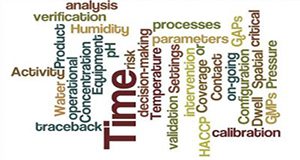HACCP is a food safety management system that is used in various segments of the food industry. The objectives of this 4-page fact sheet are to introduce the topic and to summarize the key components of a HACCP program. Written by J. A. Lepper, R. M. Goodrich-Schneider, K. R. Schneider, M. D. Danyluk and A. Sreedharan and published by the UF/IFAS Department of Food Science and Human Nutrition, January 2018.
http://edis.ifas.ufl.edu/fs122
Tag: Hazard Analysis Critical Control Points (HACCP)
HACCP: An Overview (SHN0512/FS122)
 The acronym HACCP (pronounced /’hæ-sip/) stands for “Hazard Analysis Critical Control Point”. It is a food safety management system that is increasingly used in all aspects of the food industry. This 3-page fact sheet introduces the topic and summarizes the key components of a HACCP program. Written by R. Goodrich-Schneider, K. R. Schneider, M. D. Danyluk, and R. H. Schmidt, and published by the UF Department of Food Science and Human Nutrition, May 2012.
The acronym HACCP (pronounced /’hæ-sip/) stands for “Hazard Analysis Critical Control Point”. It is a food safety management system that is increasingly used in all aspects of the food industry. This 3-page fact sheet introduces the topic and summarizes the key components of a HACCP program. Written by R. Goodrich-Schneider, K. R. Schneider, M. D. Danyluk, and R. H. Schmidt, and published by the UF Department of Food Science and Human Nutrition, May 2012.
http://edis.ifas.ufl.edu/fs122
AN221 Hazard Analysis Critical Control Points (HACCP) Principle 7: Establish Record Keeping and Documentation Procedures
AN221, a 4-page fact sheet by Larry Eubanks, Chad Carr, and Ronald H. Schmidt, describes the requirements for overall program and daily records as required under regulations for preventative accountability. Includes references. Published by the UF Department of Animal Sciences, August 2009.
http://edis.ifas.ufl.edu/AN221
AN221 Hazard Analysis Critical Control Points (HACCP) Principle 7: Establish Record Keeping and Documentation Procedures
AN221, a 4-page fact sheet by Larry Eubanks, Chad Carr, and Ronald H. Schmidt, describes how to establish proper recordkeeping as an imperative part of the HACCP system of preventative accountability. Includes references. Published by the UF Department of Animal Science, August 2009.
http://edis.ifas.ufl.edu/AN221
